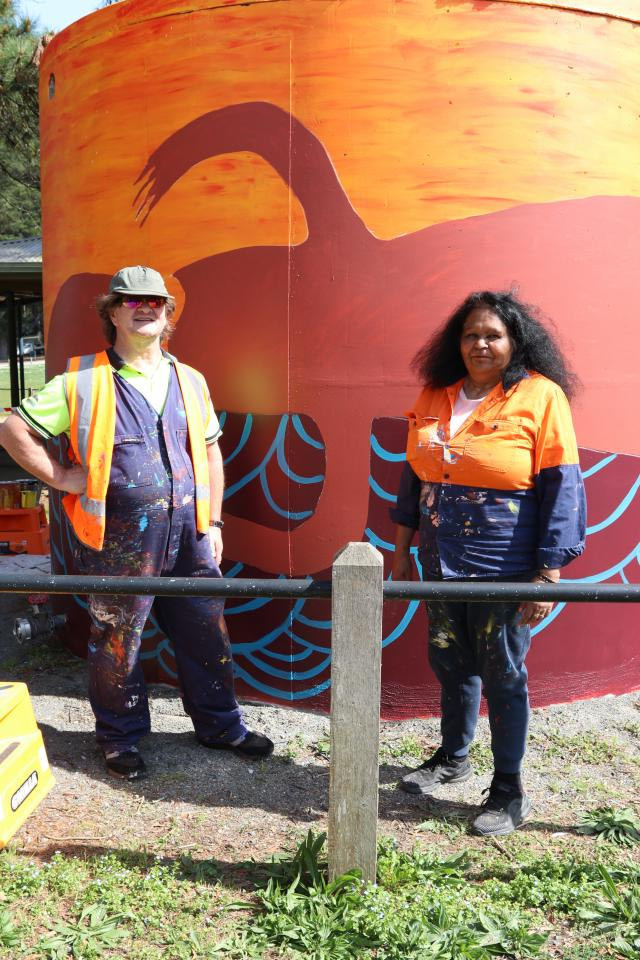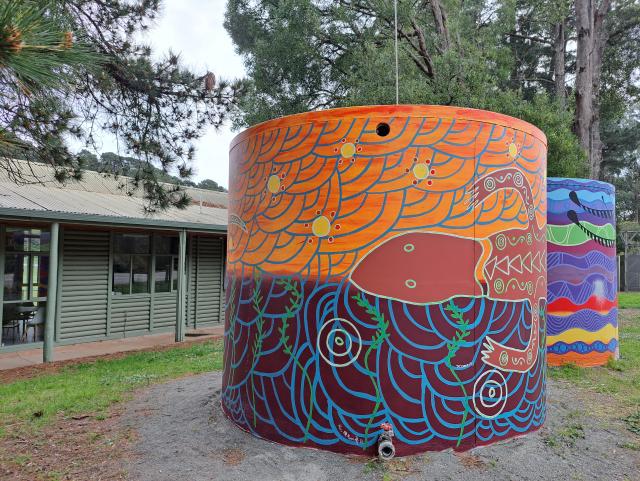
By Tyler Wright
Kirrae Whurrong artist Fiona Clarke has transformed the water tanks at the Kalorama Pavilion into a public display of art.
Clarke’s artwork – part of the ngurrak barring, or Ridgewalk project – is centred around the wildlife of the area and the customs of the Wurundjeri people.
“Goannas have been in Australia for 15 million years, and surviving on this planet for probably 19 million years, so they are strong survivors of this land,” Clarke, of Warrnambool, said.
“The blue lines represent the land and the mountains and the large circles are the waterholes which sustain the local wildlife.
The circles above the goanna represent the sunset, or the Milky Way, Clarke said, where the ancestral being, Bunjil, returns once its work is done.
“You’re trying to [tell a story], and then you’re trying to break it down into what you would associate with the overall Kulin nation areas, which is very important, I think, for that to happen,” Clarke said.
In 2022, Clarke completed artwork on a water tank in McMahons Creek.
On Friday 15 September, Clarke completed her work at Kalorama after a four-day project with the help of husband Ken McKean.
“I really enjoyed working with [the council] because in the past when I used to see these tanks, I used to wonder about artwork going on them, and I thought ‘oh, that’d be good one day,” she said.
“It looks amazing. It looks better, and they’ve had been very supportive, they’ve all helped out and assisted us too.”
Nine water tanks across the Yarra Ranges are set to be painted as part of the council’s Public Art Project.
Clarke said the overarching message of her artwork for viewers is “growing strong”.
“To make strong survivors realise they can relate to this land and feel welcome to this land – non-Indigenous, Indigenous, it doesn’t really matter – It’s really important that they can relate to it,” she said.
“The main important thing is to look after the environment.”








